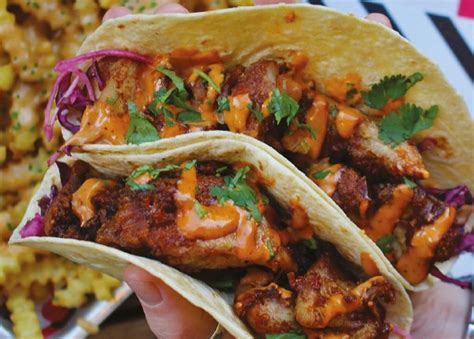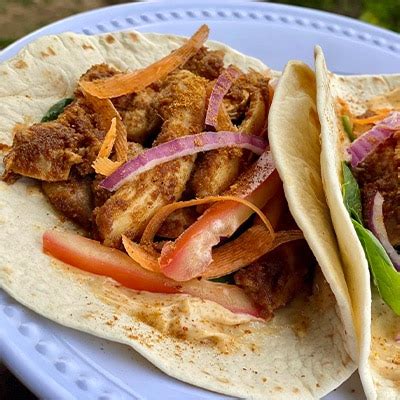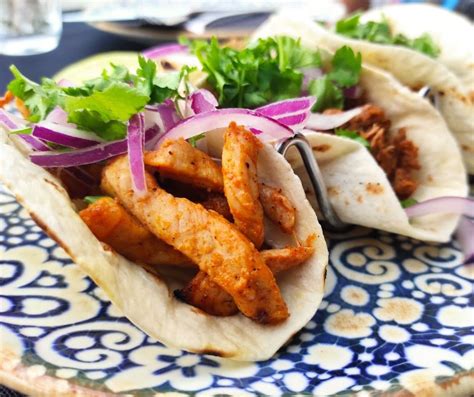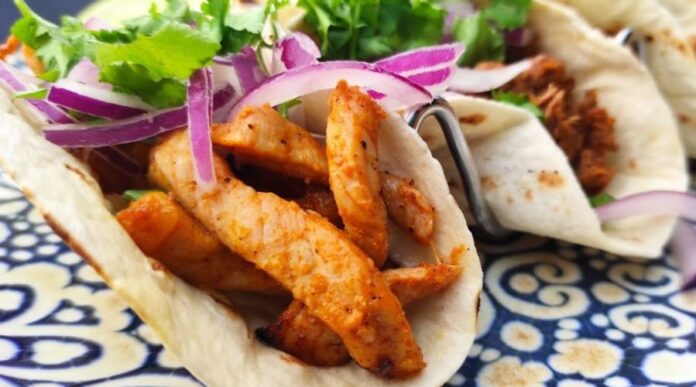Mexican cuisine is a vibrant tapestry of flavors, ingredients, and traditions that reflect the rich cultural heritage of Mexico. Its historical origins trace back to ancient indigenous civilizations, evolving through centuries of cultural exchange and adaptation. Today, Mexican restaurants around the globe celebrate this culinary legacy, offering an array of traditional dishes and innovative fusions that tantalize the palate. This article explores the key ingredients and regional variations that define Mexican cuisine, the profound influence of indigenous cultures and Spanish colonization, and the role of these restaurants in preserving cultural heritage. Additionally, we will examine the dining experiences of Mexican cuisine worldwide and the challenges faced by restaurant owners in this ever-evolving landscape.
Delve into this topic with xotools.xyz for a comprehensive understanding.
1. Historical origins and evolution of Mexican cuisine.
The historical origins of Mexican cuisine can be traced back thousands of years to the ancient civilizations of Mesoamerica, such as the Aztecs and Mayans. These cultures cultivated a variety of staple crops, including maize, beans, and squash, which formed the foundation of their diets. Maize, in particular, was sacred and versatile, used to create tortillas, tamales, and other traditional dishes. The cooking methods developed during this time, such as nixtamalization, were essential for enhancing the nutritional value of corn and have been passed down through generations.
As Mexico experienced the arrival of Spanish colonizers in the 16th century, the culinary landscape began to shift dramatically. The fusion of indigenous ingredients with Spanish foods, such as rice, pork, and various spices, led to the creation of new dishes and flavors. This blending of cultures enriched Mexican cuisine, making it more diverse and complex.
Over time, regional variations emerged, influenced by local ingredients, climate, and cultural practices. For instance, coastal areas incorporated seafood into their culinary traditions, while the central highlands focused on hearty stews and sauces. Today, Mexican cuisine is celebrated globally for its depth and richness, reflecting a long history of adaptation and innovation that continues to evolve while honoring its ancestral roots.

2. Key ingredients and traditional dishes found in Mexican restaurants.
Mexican cuisine is renowned for its vibrant flavors and diverse ingredients, many of which are essential in traditional dishes served in restaurants worldwide. Key ingredients include maize, beans, and chili peppers, which form the backbone of many meals. Maize, often ground into masa, is used to make tortillas, tamales, and various snacks like totopos. Beans, especially black and pinto varieties, are staples, providing a hearty source of protein.
Chili peppers, ranging from mild to fiery, contribute depth and heat to dishes. Commonly used varieties include jalapeños, poblanos, and serranos, which feature prominently in salsas, sauces, and marinades. Other essential ingredients include fresh herbs like cilantro, onions, and garlic, which enhance flavor profiles.
Traditional dishes found in Mexican restaurants reflect regional variations and culinary traditions. Tacos, enchiladas, and mole are popular choices that highlight the versatility of these ingredients. Tacos can be filled with anything from marinated meats to grilled vegetables, while enchiladas are often smothered in rich sauces. Mole, a complex sauce made with chocolate, spices, and chili peppers, showcases the depth of Mexican flavors and is typically served over meats. Together, these ingredients and dishes create an unforgettable dining experience that celebrates Mexico’s culinary heritage.

3. Regional variations in Mexican culinary traditions.
Mexican cuisine is incredibly diverse, with each region boasting its unique culinary traditions shaped by local ingredients, climate, and cultural influences. In the north, for example, hearty dishes dominate, featuring grilled meats and flour tortillas. Dishes like carne asada and cabrito (roasted goat) are popular, showcasing the region’s ranching heritage.
Moving south, the central region emphasizes rich sauces and complex flavors, with staples like mole and enchiladas. Here, corn-based dishes flourish, reflecting the importance of maize in daily diets.
The coastal areas, such as Veracruz and Baja California, highlight seafood, offering fresh fish tacos, ceviche, and shrimp cocktails. In contrast, the Yucatán Peninsula features unique ingredients like achiote and citrus, evident in traditional dishes like cochinita pibil, a slow-cooked pork dish wrapped in banana leaves.
These regional variations not only reflect Mexico’s geographical diversity but also its rich history, showcasing how local ingredients and culinary practices have evolved to create a tapestry of flavors that define Mexican cuisine.

4. Influence of indigenous cultures on Mexican cuisine.
The influence of indigenous cultures on Mexican cuisine is profound and foundational, shaping the very essence of its flavors and cooking techniques. Ancient civilizations, such as the Aztecs and Mayans, cultivated a variety of staple crops that remain integral to Mexican food today. Maize, beans, and squash, known as the “Three Sisters,” formed the basis of their diet, providing essential nutrients and sustaining communities for centuries.
Indigenous peoples developed unique cooking methods, such as nixtamalization, which enhances the nutritional value of corn and is still used to prepare masa for tortillas and tamales. The use of traditional tools like the molcajete (stone mortar) for grinding spices and the comal (flat griddle) for cooking tortillas reflects a deep-rooted connection to these ancient practices.
Moreover, indigenous culinary traditions have influenced flavors, such as the use of chili peppers, herbs, and spices, which create the vibrant taste profiles characteristic of Mexican cuisine. Festivals and rituals celebrating harvests also emphasize the importance of food in indigenous cultures, further solidifying the connection between their traditions and contemporary Mexican culinary practices. Today, these indigenous influences are celebrated and preserved in Mexican restaurants worldwide, offering diners a taste of history and heritage.
5. Impact of Spanish colonization on Mexican culinary practices.
The Spanish colonization of Mexico in the 16th century had a transformative impact on its culinary practices, merging indigenous ingredients and techniques with European flavors and cooking methods. This fusion created a rich culinary landscape that continues to evolve today. Spanish colonizers introduced new ingredients, such as rice, pork, chicken, dairy products, and a variety of spices, which significantly diversified Mexican cuisine.
One notable contribution was the introduction of livestock, leading to the incorporation of meats like beef and pork into traditional dishes. The blending of Spanish and indigenous flavors gave rise to iconic meals such as mole, which combines chocolate with spices, and various stews that highlight both cultural influences.
Additionally, Spanish cooking techniques, including frying and baking, integrated into local practices, resulting in dishes like empanadas and churros. The colonization process also led to the establishment of markets and the commercialization of food, changing how ingredients were sourced and consumed. Overall, Spanish colonization played a pivotal role in shaping modern Mexican cuisine, creating a dynamic culinary tradition that reflects a rich history of cultural exchange and adaptation.
6. Modern adaptations and fusion trends in Mexican restaurants.
In recent years, Mexican cuisine has seen a surge in modern adaptations and fusion trends that cater to evolving tastes and global influences. Many Mexican restaurants now incorporate international ingredients and innovative cooking techniques, resulting in dishes that reflect both tradition and contemporary culinary creativity. This trend has led to the emergence of gourmet tacos, which might feature unusual fillings such as Korean barbecue or Asian-inspired slaws, combining the essence of traditional tacos with global flavors.
Moreover, chefs are increasingly experimenting with plant-based alternatives, creating vegan and vegetarian versions of classic dishes like enchiladas and chiles en nogada. These adaptations not only cater to dietary preferences but also promote sustainability within the culinary landscape.
Fusion cuisine has also gained traction, with restaurants blending elements from different culinary traditions. For example, a popular trend is the fusion of Mexican and Mediterranean flavors, seen in dishes like quinoa-stuffed peppers with tahini sauce. These modern adaptations celebrate the versatility of Mexican cuisine while attracting a broader audience, ensuring its continued relevance and appeal in the global culinary scene.
7. Role of Mexican restaurants in preserving cultural heritage.
Mexican restaurants play a vital role in preserving and promoting the cultural heritage of Mexico, serving as ambassadors of its rich culinary traditions. By offering traditional dishes that highlight indigenous ingredients and regional specialties, these establishments provide diners with an authentic taste of Mexico’s history. This culinary representation not only educates patrons about the significance of various ingredients and cooking techniques but also fosters a deeper appreciation for Mexican culture.
Many restaurants celebrate cultural events and festivals, incorporating traditional music, dance, and decor into their dining experiences. This immersive approach helps to keep customs alive and encourages community engagement, allowing both locals and visitors to connect with Mexican heritage.
Additionally, family-owned Mexican restaurants often pass down recipes and cooking methods through generations, maintaining the authenticity of their cuisine. This practice ensures that the essence of traditional Mexican cooking is preserved, even as modern adaptations emerge.
Furthermore, these establishments contribute to the economy and social fabric of their communities, creating a space where people can gather to share meals and stories. In this way, Mexican restaurants not only serve delicious food but also act as cultural hubs that celebrate and sustain Mexico’s rich culinary legacy.
8. Comparison of Mexican dining experiences across different countries.
The dining experience at Mexican restaurants varies significantly across different countries, reflecting local tastes, cultural adaptations, and the availability of ingredients. In the United States, Mexican cuisine often leans toward Tex-Mex, characterized by dishes like burritos, nachos, and oversized portions. Here, vibrant flavors are complemented by a casual dining atmosphere, making it a popular choice for quick meals and social gatherings. The fusion of American and Mexican influences creates a unique culinary landscape, with chains like Chipotle and Taco Bell shaping perceptions of Mexican food.
In contrast, Mexican restaurants in Europe tend to focus on authenticity, showcasing traditional recipes and cooking methods. In countries like Spain, the influence of historical ties leads to a blend of flavors, where dishes may incorporate local ingredients alongside classic Mexican staples. The dining experience is often more formal, emphasizing shared plates and a slower pace, akin to Mediterranean dining customs.
Meanwhile, in countries with growing Mexican communities, such as Canada and Australia, restaurants often reflect a mix of traditional and modern interpretations. Chefs may experiment with ingredients and presentation while maintaining a connection to their roots. Overall, the diversity in dining experiences highlights the adaptability of Mexican cuisine, allowing it to resonate with various cultures while preserving its unique identity.
9. Challenges and opportunities for Mexican restaurant owners globally.
Mexican restaurant owners face a unique set of challenges and opportunities in the global culinary landscape. One significant challenge is navigating the complexities of sourcing authentic ingredients, especially in regions where certain traditional items may be scarce or expensive. This can impact the authenticity of the dishes served and create barriers to maintaining cultural integrity.
Additionally, restaurant owners must contend with competition from both local eateries and other international cuisines, necessitating a strong brand identity and marketing strategy to attract customers. The ongoing shifts in consumer preferences towards health-conscious dining can also pose challenges, pushing owners to adapt their menus while remaining true to traditional flavors.
On the flip side, there are numerous opportunities for Mexican restaurant owners. The growing global fascination with Mexican cuisine, coupled with an increasing appreciation for diverse culinary experiences, opens doors for expansion. There is potential for innovation in menu offerings, such as plant-based options and fusion dishes that cater to modern palates. Additionally, leveraging social media and food delivery platforms can help restaurant owners reach a wider audience and build a loyal customer base, ultimately positioning them for success in an evolving market.
10. Significance of Mexican festivals and celebrations in
Mexican festivals and celebrations hold significant cultural importance, serving as vibrant expressions of heritage that are often mirrored in the culinary practices of Mexican restaurants. Events such as Día de los Muertos (Day of the Dead) and Cinco de Mayo not only celebrate historical and cultural milestones but also provide an opportunity to showcase traditional foods that are integral to these festivities. For instance, pan de muerto, a special bread made for Día de los Muertos, reflects the deep connection between food and memory, honoring deceased loved ones through shared meals.
These celebrations promote community engagement, bringing families and friends together to partake in culinary traditions that have been passed down through generations. Restaurants often embrace these occasions by hosting special menus or themed events, allowing patrons to experience authentic flavors associated with the festivities.
Moreover, festivals help preserve traditional cooking techniques and regional specialties, fostering a sense of pride in Mexican heritage. By highlighting the significance of these celebrations, Mexican restaurants play a crucial role in maintaining cultural continuity, inviting diners to celebrate not just the food but the rich history and traditions that accompany it.
The exploration of Mexican restaurants reveals a rich tapestry of culinary heritage shaped by historical influences, regional variations, and modern adaptations. These establishments not only serve delicious dishes but also play a crucial role in preserving cultural traditions and fostering community connections. By embracing both authenticity and innovation, Mexican cuisine continues to captivate palates worldwide, while festivals and celebrations enhance the dining experience. As challenges arise, opportunities for growth and adaptation abound, ensuring that the vibrant legacy of Mexican cuisine thrives for future generations.
xotools.xyz









